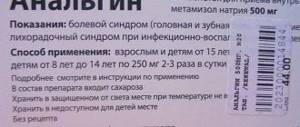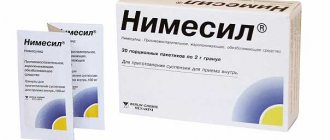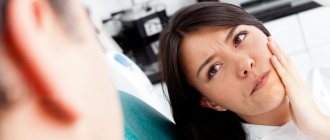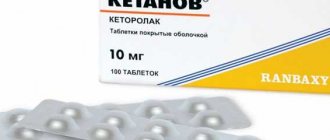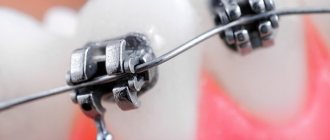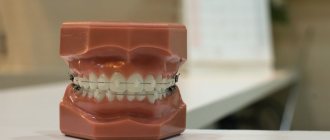Unfortunately, situations where a person is forced to live with chronic pain for years are not so rare. After all, not all diseases can be cured quickly and forever. How to help such patients?
Our expert is the head of the Pain Treatment Clinic of the Federal Scientific and Clinical Center of the Federal Medical and Biological Agency of Russia, anesthesiologist, resuscitator and algologist Igor Antonov .
Pain is a kind of defense system of the body. If there is a problem somewhere, the nerves send the brain an alarm signal “SOS! Take action urgently!” It is pain that protects our body from damage: if it is hot, you need to pull your hand away, if something is pressing, ease the pressure, if an injury occurs, protect the site of injury. So pain is, in fact, of great benefit. However, this is only true for acute pain. It's a completely different matter when the pain becomes chronic.
How it works
Pain is a signal from the body about a problem that needs to be recognized and urgent action taken (drink medicine, see a doctor). And if our consciousness perceives the signal, it means that it is capable of turning it off. Of course, this will not solve the problem - the burn will still appear, and the disease will not go away, but the pain impulse will stop flowing or will become much weaker. Pain psychotherapy works approximately on this principle.
Article on the topic
Treat without maiming. A neurologist on how to properly deal with headaches There are studies that prove that our emotional state affects the intensity of pain - fear and anxiety increase pain. There is also a completely logical explanation for this. During stress, special hormones are released that cause the walls of blood vessels and the muscles of our body to tense (after all, in a stressful situation, it is necessary to mobilize all the body’s resources). But such clamps can intensify existing pain or lead to the emergence of new foci of pain. It is no coincidence that many types of pain (headache, muscle pain) are called tension pain.
And if so, in order to reduce pain, you first need to calm down and relax. There are several techniques for this.
Improved motor control
Physical therapists often seek to correct "dysfunctional" movement patterns. However, this is not entirely clear, for example, some studies show that exercises to improve motor control do reduce pain, but the interesting thing is that this can happen even in the absence of improvement in motor control. Additionally, most of our ideas about what movements are dysfunctional are guesswork and do not fully reflect the complexity and variability of human movement.
Breathing exercises
Our body is designed in such a way that when we inhale, all parts of our body tense, and when we exhale, on the contrary, they relax. Therefore, when performing breathing exercises, you need to focus on exhalation.
Inhale as usual and exhale long. It is enough to repeat this exercise 3-5 times - and the tension will subside, the stress will decrease, and the pain will subside. This breathing exercise is effective for almost any type of pain.
They treat and cripple. Why are painkillers dangerous for the human body? Read more
Improved overall health
Anything you can do to improve your overall health can help with musculoskeletal pain, especially when the pain is chronic and comorbid with other chronic diseases such as obesity or autoimmune diseases.
In this case, working to improve your overall health may be the best way to manage your pain. This means eating a balanced diet, maintaining a work-rest schedule, walking outdoors, aerobic exercise, minimizing emotional stress, and getting good sleep.
Note
Make sure your interest in healthy living doesn't turn into unhealthy behavior.
Switching attention
This technique is good for short-term pain, such as an earache, or if you need to wait for pain medication to take effect.
We are all a little hypnotists. But if not everyone can inspire something to others, then everyone can influence themselves.
Try to freeze your pain. Sit down, close your eyes, mentally focus on the painful place. Rub the area with something cold, such as a piece of ice or a damp cloth. Now fix your attention not on the pain, but on the feeling of cold, and the pain will subside. The fact is that our psyche is designed in such a way that at a certain moment in time we can experience only one feeling, and which of the sensations you focus on at a particular moment is largely a matter of choice.
Article on the topic
Why does my face hurt? Which doctor will make the correct diagnosis?
Mind and body
Pain is more than just tissue damage. This is a reflection of how the nervous system and unconscious parts of the brain perceive processes occurring in the body (and beyond). This is especially true when the pain is chronic, correlated with other perceptual disturbances, and appears to be due to psychosocial rather than structural problems. There are many different mind/body practices that focus on improving body awareness through increased awareness and focused attention. Some of them, studies show, actually reduce pain.
If you are interested in this area, consider one of the following treatments for chronic pain:
- Meditation.
- Mindfulness-based stress reduction.
- Yoga.
- Dancing.
- Feldenkrais method.
- Martial arts (especially tai chi or qigong).
Note
- Don’t think that the pain is “in your head” and that the body doesn’t really matter, etc.
- The mind/body method is not a cure for pain, but rather it can be seen as a valuable tool for reducing it.
Autogenic training
This technique is aimed at learning to relax certain areas of the body through willpower. Autogenic training is especially effective for headaches. After all, there are no pain receptors in the brain itself, and pain most often occurs due to tension in the walls of blood vessels, for example, due to stress. If stress becomes chronic, then headaches bother a person no longer occasionally, but constantly. The best way to relieve such pain is to simply relax. But achieving relaxation is not as easy as it seems, even if you spend half a day persuading yourself to relax your muscles, perhaps they will still remain tense, because often people simply do not notice stiffness.
Therefore, you need to learn to capture the moment of relaxation. To do this, tense the desired part of the body (for a headache it will be the neck and shoulders), then relax and try to feel the difference. Remember this feeling. At the moment of maximum relaxation, the pain will begin to go away. If you do exercises regularly, you can get rid of chronic headaches, and at the same time from insomnia, which is also often associated with vascular and muscle tension. But in order for your muscles to remember the state of complete relaxation, you will have to train. Repeat the exercises for a few minutes in the morning and evening for three weeks - and then your movements will become automatic.
Coping with pain. Why older people can’t tolerate it Read more
How to relieve a severe sore throat
Cold or virus?
Discomfort and pain in the throat in most cases are the result of irritation or inflammation, which can be caused by viral diseases, bacteria or pathogenic fungi. Severe pain often accompanies inflammation in the pharynx, and hoarseness occurs when the larynx is inflamed. It is important to start treating a cold at its first signs, otherwise the disease can be started, and then it will take a long time to deal with the consequences in the form of complications. Agree, such prospects are not at all encouraging.
As a rule, with timely treatment and bed rest - certainly with plenty of warm herbal teas, decoctions with honey, ginger and lemon - throat problems go away within a few days. But if your throat hurts for a long time, this most likely indicates pharyngitis or mononucleosis.
The characteristic features of a sore throat can “suggest” the cause of the discomfort. With viruses, there is an acute burning sensation in the larynx and dry mouth. When swallowing, the pain intensifies and radiates to the head. With tonsillitis (tonsillitis), there is also pain when swallowing, there are additional symptoms: sore throat, inflammation of the tonsils, a feeling that a “lump” appears in the throat, which prevents you from swallowing water and food. It is worth remembering, however, that the data presented here is relative. Only a doctor can make an accurate diagnosis.
“Ambulance” for the throat
How to relieve severe sore throat? Today, the following products are the most popular and can be used in almost any conditions.
1. Rinse. For common colds, to reduce pain in the throat, therapists advise gargling: dissolve 1 tsp in 200 ml of warm (not hot!) water. salt, and gargle with this water - throwing your head up, pronouncing the sound “O”. The procedure is performed every 1-1.5 hours for several days. Decoctions of chamomile or eucalyptus are excellent as rinses - these herbs have an antiseptic effect. Pharmacies also sell ready-made rinses. The procedure has a good cumulative effect, allowing over time to reduce and relieve sore throat when swallowing. Disadvantage: certain conditions and time are required.
2. Sprays. The medicine is instantly applied to the sore throat. After applying the spray, you must refrain from eating and drinking for 30 minutes so as not to wash off the “working” substance with saliva.
3. Lollipops and lozenges. These remedies effectively help relieve discomfort when swallowing and make it possible to quickly get rid of a sore throat. For example, “Septolete® total”. This product, in the form of a lozenge, provides a comprehensive approach to treatment. The benzydamine contained in the composition relieves pain and eliminates the cause of inflammation, and cetylpyridinium chloride eliminates viruses, bacteria and fungi - that is, it destroys the direct cause of the infection. The tablets are easy to use: they need to be slowly dissolved in the mouth until completely dissolved. “Septolete® total” will help in a short time to relieve pain when swallowing, the drug is suitable for children over 12 years old, copes with both mild and severe sore throat.
Be healthy!
Created by experts commissioned by KRKA PHARMA LLC
Useful tips
- Do not perceive psychological techniques as a replacement for treatment . Psychotherapy simply improves your condition, but does not cure the disease.
- Give yourself incentives to get better . It has been noticed that people who have something to recover for, get back on their feet much faster. Imagine what you will do when the disease goes away. It is not necessary to set global goals; you can dream about a trip to the country or going to the gym.
- Believe in yourself . Psychological methods of pain relief work worse for skeptics than for those who believe in their ability to self-heal. Even if it's hard to fully believe, just try some technique, accepting the possibility that it might have an effect.
- Focus on your feelings . If a certain technique is unpleasant or completely ineffective for you, try other methods. Some people are more suitable for breathing exercises, others respond better to autogenic training.
Rest
If your Achilles tendon begins to hurt after a few weeks of intense running, you can assume that the underlying cause of the pain is excess mechanical stress. Therefore, rest is a logical option to solve the problem (especially in the first stages). Most people understand this well, but some neglect this simple rule.
And that's why:
- This may be due to the fact that some people simply do not like to rest. Of course, by pushing themselves regardless of their condition, they can harm themselves.
- Another reason is the inability to notice that the load has become excessive. Obviously, 5km a week is more than nothing, but the transition from 10km to 15km may be less noticeable. Increased physical stress is even more difficult to notice when it is associated with other activities. For example, adding two low-intensity workouts to your weekly running program may require reducing your overall running volume.
- The most difficult thing to notice is the additional “load” in the form of emotional stress, which has a real physical effect on the body, an example of which may be an increase in pain sensitivity. So your back can easily handle 20km of running a week when you're not under any emotional stress, but it starts to hurt when you're stuck at work or don't get enough sleep.
To make sure you're giving your body enough opportunity to recover, pay attention to the following things.
- If an activity causes pain, don't do it (at least for a while) or do it to a lesser extent.
- Avoid overtraining and manage your training load. This may require some expert level knowledge, for example if you are an athlete.
- Try to reduce emotional stress.
- Optimize your sleep and recovery.
Note
- Taking a lot of rest is not always a good thing.
- If you've rested long enough to recover, then it's probably time to move on to a more active phase of treatment.
Effects of exercise on sensory pathways
The painful nerve impulse travels along the sensory afferent nerve, through the spinal cord and thalamus and ends in the corresponding zone of the cortex. Exercise also activates the sensory nerves coming from the muscles, causing changes along the entire nerve pathway. Everything that is currently known about these changes, scientists have found out in experiments on mice and rats. So, training allows you to normalize the number of epidermal receptors that perceive pain. In the sensory neurons of the spinal ganglia, they activate the synthesis of various nerve growth factors and neurotrophic factors. Exercise stimulates the division of Schwann cells, which support axons and nourish neurons. Thus, training stimulates the regeneration of peripheral nerves, which is important for neuropathies.
Neuropathic pain often occurs in diabetes. This disease and its consequences are being studied in rodents fed fatty foods. But the mice that ran in the wheel did not develop insulin resistance and did not get sick.
Physical activity has a beneficial effect not only on the peripheral nervous system, but also on the central one. There is little research on this topic. For example, exercise is known to reduce phosphorylation of the NR1 subunit of the NMDA receptor in the brainstem, thereby reducing pain perception.
Aerobic or endurance exercise increases nitrate levels in the blood plasma and cerebrospinal fluid. When the scientists performed these experiments on rats that were unable to synthesize nitric oxide, the exercises lost their pain-relieving properties, so the researchers believe that nitric oxide may act as an analgesic.
Physical activity stimulates the synthesis of endogenous opioid peptides in the brain stem. They have analgesic properties, however, according to some experts, the cannabinoid system, which is also activated during training, may also play a significant role in pain relief.
Apparently, the analgesic effect of exercise consists of several factors and is successfully combined with medication. For example, risedronate, a drug prescribed for osteoporosis, was more effective at increasing bone mineralization when rats given it were forced to exercise on a treadmill.
More detailed information about the effect of physical activity on the nervous system is given in Figure 1.
Exercise and inflammation
Chronic pain is always accompanied by inflammation. Damaged tissues release biologically active molecules, inflammatory cytokines (tumor necrosis factor TNF-α, interleukin1-beta IL1-β and others), which affect the nervous system, causing pain. During neuropathic pain, many proinflammatory cytokines, especially TNF-α, are actively synthesized in the spinal cord. But the same tissues also synthesize anti-inflammatory cytokines (IL-10, IL-6), some protein mediators and opioid peptides, which suppress pain caused by inflammatory factors. The overall effect depends on which factors predominate. Physical activity often promotes a powerful release of anti-inflammatory cytokines, weakening the inflammatory response and pain.
It is true that people react differently to physical activity, and some experience increased inflammatory reactions, but in general, exercise can provide relief to patients with chronic pain. Both strength and endurance exercises are beneficial. Both reduce levels of inflammatory cytokines and increase levels of anti-inflammatory molecules, the high levels of which remain long after the end of the workout. Researchers observe this effect in both young and old people.
Experiments have shown that training that reduces inflammatory factors reduces cold and mechanical allodynia and increased sensitivity to pain. The interaction between inflammation, pain and exercise is presented in more detail in Figure 2.
Effect of exercise on neuropathic pain
Knowledge of the molecular basis of the analgesic effect of exercise is still incomplete, research in this area continues, but known facts allow the use of physical activity as an analgesic. Testing of any new drug begins in the laboratory, testing it primarily on mice and rats. Training was no exception. Researchers paid special attention to pain associated with diabetes. In one experiment, treadmill running reduced many forms of allodynia in sick rats, including mechanical, cold, and heat. However, overuse can cause damage and the pain returns. Researchers cannot yet determine the load at which training no longer has a therapeutic effect.
Neuropathic pain is often caused by the cytostatic drug paclitaxel, which also leads to the loss of sensory receptors on the skin. Treadmill exercise alleviates these symptoms.
For pain caused by spinal cord injury, treadmill exercise reduces pain and improves nerve function up to five weeks after the injury.
As a rule, both aerobic training and endurance exercise are effective. Only static loads for pain are harmful; they only increase pain sensitivity. The intensity and duration of training is of great importance. For example, running on a treadmill stimulates nerve growth at low intensity but not at high intensity. Intense short-term training significantly reduces mechanical allodynia due to chronic tissue compression. But these are all preliminary remarks, and further research is needed for detailed instructions.
Swimming received particular praise. It helps with nerve damage by reducing both mechanical allodynia and heat sensitivity; reduces hypersensitivity to pain caused by nerve damage, cold, and high temperature. Swimming suppresses the synthesis of some inflammatory factors and stimulates the synthesis of adenosine, the interaction of which with adenosine receptors reduces mechanical allodynia. Swimming may be an optimal option for patients with neuropathies, as it can reduce the stress on sore limbs. It also avoids problems with coordination of movements that occur in many patients, especially the elderly. But before swimming can be used in the clinic, more research is needed.
Another question to be answered is how soon after injury can you start training. There are many studies reporting positive results from exercise started in the first week after injury. Treadmill exercise started three days after a sciatic nerve injury has immediate and long-term benefits, regardless of the duration of the workout. Exercise started after five days prevents the development of neuropathic pain. A week after the injury, it was possible to reduce temperature and tactile hypersensitivity. These studies show that there is no need to wait. However, different disorders affect movement control differently, so the training program must be selected individually.

